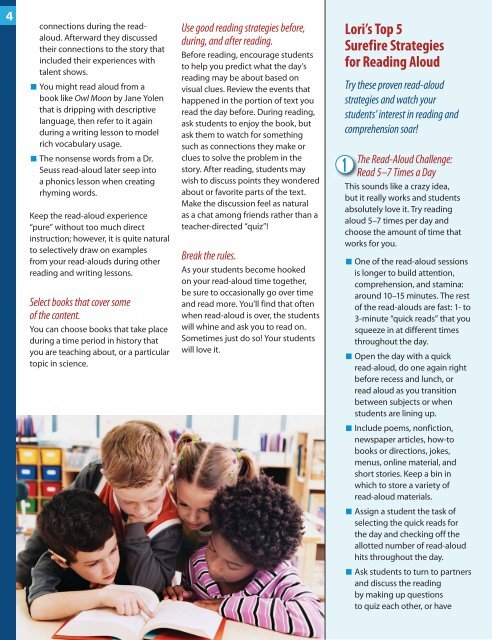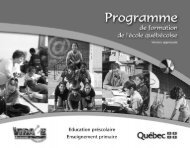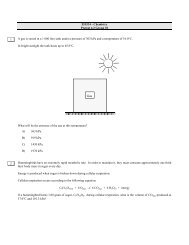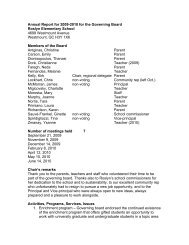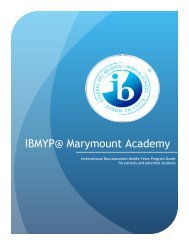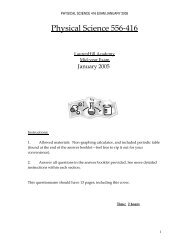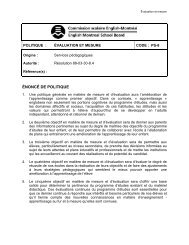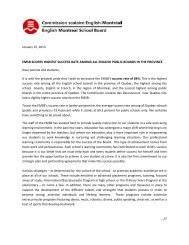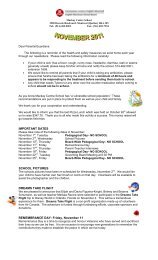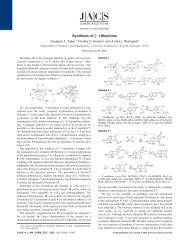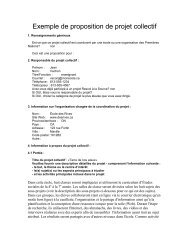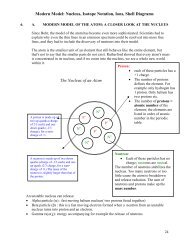Literacy Survival Tips
Literacy Survival Tips
Literacy Survival Tips
You also want an ePaper? Increase the reach of your titles
YUMPU automatically turns print PDFs into web optimized ePapers that Google loves.
4<br />
connections during the readaloud.<br />
Afterward they discussed<br />
their connections to the story that<br />
included their experiences with<br />
talent shows.<br />
■ You might read aloud from a<br />
book like Owl Moon by Jane Yolen<br />
that is dripping with descriptive<br />
language, then refer to it again<br />
during a writing lesson to model<br />
rich vocabulary usage.<br />
■ The nonsense words from a Dr.<br />
Seuss read-aloud later seep into<br />
a phonics lesson when creating<br />
rhyming words.<br />
Keep the read-aloud experience<br />
“pure” without too much direct<br />
instruction; however, it is quite natural<br />
to selectively draw on examples<br />
from your read-alouds during other<br />
reading and writing lessons.<br />
Select books that cover some<br />
of the content.<br />
You can choose books that take place<br />
during a time period in history that<br />
you are teaching about, or a particular<br />
topic in science.<br />
Use good reading strategies before,<br />
during, and after reading.<br />
Before reading, encourage students<br />
to help you predict what the day’s<br />
reading may be about based on<br />
visual clues. Review the events that<br />
happened in the portion of text you<br />
read the day before. During reading,<br />
ask students to enjoy the book, but<br />
ask them to watch for something<br />
such as connections they make or<br />
clues to solve the problem in the<br />
story. After reading, students may<br />
wish to discuss points they wondered<br />
about or favorite parts of the text.<br />
Make the discussion feel as natural<br />
as a chat among friends rather than a<br />
teacher-directed “quiz”!<br />
Break the rules.<br />
As your students become hooked<br />
on your read-aloud time together,<br />
be sure to occasionally go over time<br />
and read more. You’ll find that often<br />
when read-aloud is over, the students<br />
will whine and ask you to read on.<br />
Sometimes just do so! Your students<br />
will love it.<br />
Lori’s Top 5<br />
Surefire Strategies<br />
for Reading Aloud<br />
Try these proven read-aloud<br />
strategies and watch your<br />
students’ interest in reading and<br />
comprehension soar!<br />
The Read-Aloud Challenge:<br />
Read 5–7 Times a Day<br />
This sounds like a crazy idea,<br />
but it really works and students<br />
absolutely love it. Try reading<br />
aloud 5–7 times per day and<br />
choose the amount of time that<br />
works for you.<br />
■ One of the read-aloud sessions<br />
is longer to build attention,<br />
comprehension, and stamina:<br />
around 10–15 minutes. The rest<br />
of the read-alouds are fast: 1- to<br />
3-minute “quick reads” that you<br />
squeeze in at different times<br />
throughout the day.<br />
■ Open the day with a quick<br />
read-aloud, do one again right<br />
before recess and lunch, or<br />
read aloud as you transition<br />
between subjects or when<br />
students are lining up.<br />
■ Include poems, nonfiction,<br />
newspaper articles, how-to<br />
books or directions, jokes,<br />
menus, online material, and<br />
short stories. Keep a bin in<br />
which to store a variety of<br />
read-aloud materials.<br />
■ Assign a student the task of<br />
selecting the quick reads for<br />
the day and checking off the<br />
allotted number of read-aloud<br />
hits throughout the day.<br />
■ Ask students to turn to partners<br />
and discuss the reading<br />
by making up questions<br />
to quiz each other, or have


